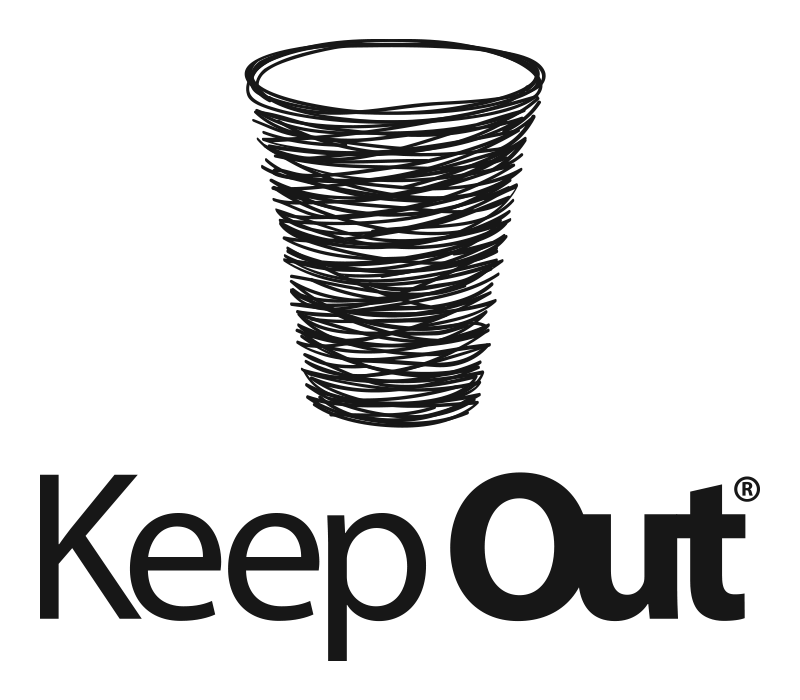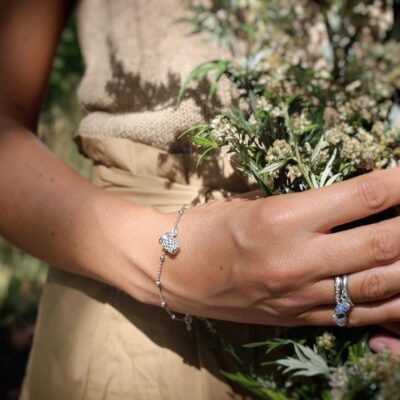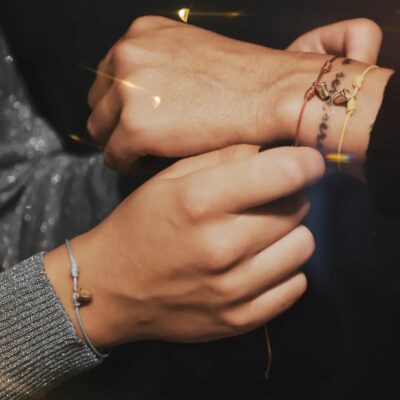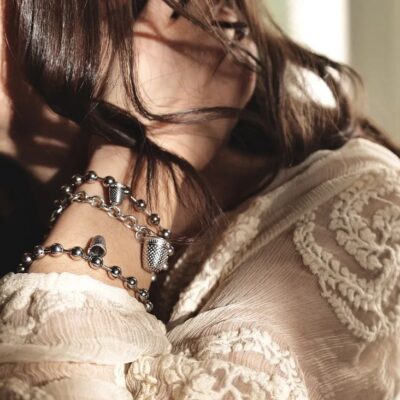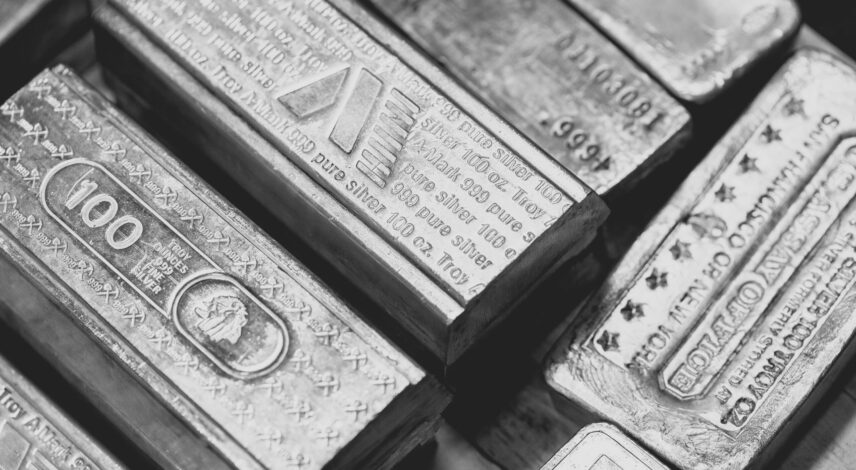
La rodiatura: una scelta vincente
0 commentsSee English below
Keep Out utilizza soltanto argento puro, uno dei metalli più belli e splendenti. Per migliorarne l’aspetto e la durata, si ricorre a un procedimento chiamato rodiatura.
Che cosa è la rodiatura?
La rodiatura prende il nome da un metallo chiamato rodio: è raro, bianco, molto resistente. Spesso è utilizzato in lega con il platino per aumentare la durezza di quel metallo. Il rodio non è solo molto resistente, ma è utilizzato anche per rendere più lucidi gli altri metalli.
Il prezzo è però molto costoso: il suo prezzo supera quello del platino e dell’oro.
La rodiatura consiste nella copertura del gioiello con il sottile strato di rodio. Lo spessore minimo dello strato è di 0,1 micron, il massimo di 25 micron. Il rodio è utilizzato spesso per rendere lucido l’oro bianco e, più raramente, l’argento: è, infatti, un procedimento abbastanza costoso. Il metodo per rodiare un gioiello è simile a quello che si utilizza per placcare in oro: è un procedimento galvanico. In pratica, si utilizzano l’elettricità e un bagno in cui si trovano microparticelle di rodio, che ricoprono il metallo del gioiello con un sottilissimo strato. Il risultato è un metallo molto più brillante.
Perché si usa la rodiatura?
La rodiatura è utilizzata per rendere il gioiello lucente, ma anche perché protegge il metallo dalla corrosione e dall’usura, e preserva l’aspetto originale. Infine, il rodio di solito è tollerato anche dalle persone allergiche, per esempio, al nichel che in passato è stato spesso utilizzato in lega con l’oro. La copertura di rodio evita che la pelle sia a contatto con il metallo del gioiello.
Certo, a patto di non essere allergici proprio al rodio…
Come conservare i gioielli sottoposti a rodiatura
Come abbiamo scritto, il processo di rodiatura consiste nella copertura del metallo con una sottile pellicola di rodio. Il rodio è un metallo resistente, certo, ma con il tempo tutto si usura. Per conservare la rodiatura più a lungo, e quindi per mantenere la lucentezza del gioiello, bisogna fare attenzione a non sfregare il metallo contro oggetti che possano graffiarlo. Inoltre, non è consigliabile pulire il metallo con detergenti aggressivi. Meglio un panno molto morbido e semplice acqua, oppure uno spazzolino da denti, a patto che non abbia setole dure. Per scoprire come prenderti cura dei gioielli Keep Out, in argento e non, puoi leggere questo approfondimento
English version
Keep Out uses only pure silver, one of the most beautiful and shining metals. In order to improve its appearance and durability, a process called rhodium plating is used.
What is rhodium plating?
Rhodium plating is named after a metal called rhodium: it is rare, white, very resistant. It is often alloyed with platinum to increase its hardness. Rhodium is not only very resistant, but also used to make other metals more polished.
However, it is very expensive: its price exceeds the price of platinum and gold.
Rhodium plating consists of a thin layer of rhodium covering the jewel. The minimum layer thickness is 0.1 microns, the maximum is 25 microns. Rhodium is often used to make white gold and, more rarely, silver shine: the process is, in fact, quite expensive. The method of rhodium plating is similar to that used for gold plating: it is a galvanic process. In practice, electricity is used in a bath, in which micro particles of rhodium cover the metal of the jewel with a very thin layer. The result is a much brighter metal.
Why do we use rhodium plating?
Rhodium plating is used to make the jewel shiny, but also because it protects the metal from corrosion and wear, and preserves its original appearance. Finally, rhodium is usually tolerated also by people allergic, for example, to nickel, which has often been used in the past alloyed with gold. Rhodium plating prevents skin from touching the jewel metal.
Sure, as long as you are not allergic to rhodium…
Storing rhodium plated jewels
As we have written, the rhodium plating process consists of covering the metal with a thin rhodium film. Rhodium is a resistant metal, of course, but everything can wear over time. To preserve the rhodium plating for longer, and therefore to maintain the shine of your jewel, care must be taken not to rub the metal against objects that could scratch it. Furthermore, it is not recommended to clean the metal with aggressive cleaning agents. Instead, use a very soft cloth and simple water, or a toothbrush with soft bristles.

